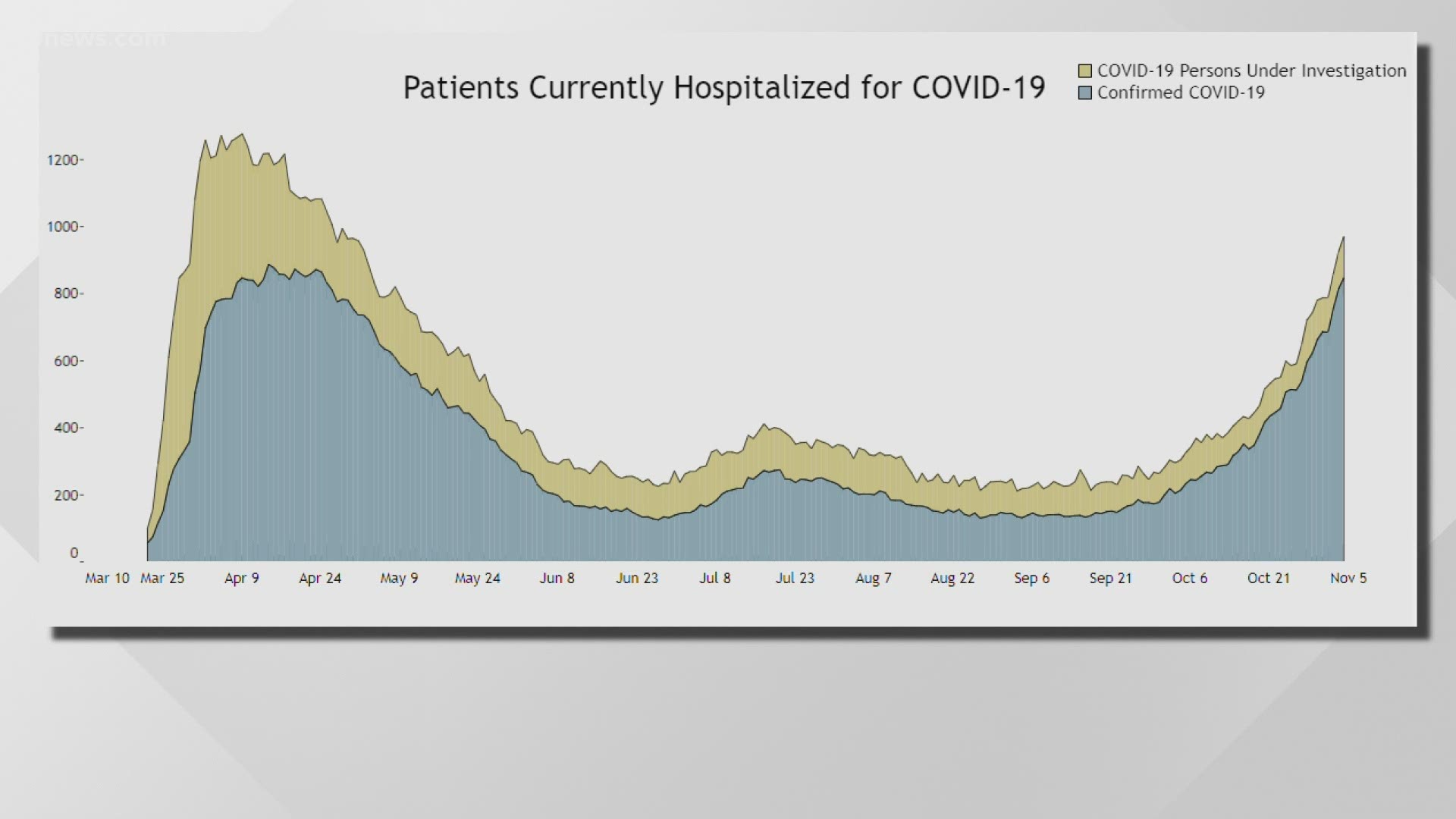COLORADO, USA — The Colorado Department of Public Health and Environment (CDPHE) provided an update Wednesday on COVID-19 as the state's positivity levels and hospitalization rates continue to be a concern.
Colorado’s positivity rate has more than doubled in recent weeks and continues to increase day-over-day, CDPHE said. The state has also routinely seen more than 2,000 new cases per day, the most since the beginning of the pandemic in March.
“Right now we think about 9% of Coloradans have been infected with COVID-19," State Epidemiologist Rachel Herlihy said during a COVID-19 briefing Wednesday morning. "That means the vast majority of people in our state are really still at risk."
Herlihy also warned about a steep rise in COVID-19 hospitalizations, and what it could mean for local hospitals in the coming weeks. She called on Coloradans to get a flu shot in an effort to ease the burden on hospitals.
“One thing that the public can do to ensure hospital capacity isn’t overrun is to get a flu shot,” Herlihy said. “That’ll help prevent flu-related hospitalizations, allowing hospitals to conserve resources.”
As of Tuesday, there are 814 patients currently hospitalized in Colorado, and the seven-day, moving average positivity rate increased to 8.92%, according to CDPHE.
Positivity is the number of tests that come back with a COVID-19 result. Above 10% could be an indicator that not enough testing is being done and that only people likely to have COVID are getting tested. The World Health Organization (WHO) in May 2020 recommended that the positivity rate should be even lower, 5%, to contain the virus.
Colorado is almost at the same levels of hospitalizations as in the spring, Herlihy said, and with current transmission rates, she estimates Colorado will exceed those levels in the next few days.
Herlihy encouraged Coloradans to take actions as they did in the spring to help flatten the curve, like frequent hand-washing, wearing a mask, keeping at least 6-feet of social distancing and reducing interactions with individuals outside of your household.
CPHE said testing remains a key strategy in controlling the virus and encouraged anyone with symptoms or who has been exposed to the virus to get tested at one of the more than 50 community testing sites around the state.
Colorado is now trying to find ways to make sure everyone who needs to be hospitalized for COVID-19 can get treatment.
The Colorado hospital association Wednesday announced a new plan to keep hospitals from getting overrun.
The Combined Hospital Transfer Center will allow hospitals at risk of exceeding capacity to transfer patients to other regions across the state with more space. For example, if western Colorado is seeing a surge in cases while Denver is not, hospitals can transfer patients to free up space.
"Ultimately, the goal is that we utilize all of the resources we have available across our state," said Darlene Tad-y, the Vice President of Clinical Affairs with the Colorado Hospital Association. "It’s really about when the existing transfer system is insufficient to handle the degree of surge or the capacity needed in a whole region and needs to call on the resources of everyone else in the state."
The system was designed after learning from how Colorado and other states handled surges of COVID-19 cases in past months. We know by now that a surge in cases usually means a surge in hospitalizations will follow. Hospitals are getting ready for it to get worse.
“There are a number of issues that CHA and Colorado’s hospitals have been working on to try to ensure that health system capacity is protected, supplies are available and that patients can go to the nearest hospitals knowing that the hospital will help ensure care is available,” said Darlene Tad-y, MD, CHA vice president of clinical affairs. “One of the best practices we learned from other states that have already responded to significant outbreaks was to stand up a statewide transfer center. This will allow us to respond rapidly to capacity issues that a city or region of Colorado may face and to ensure that we are fully utilizing the capacity of our state’s entire hospital system."
The goal is to never have to use it, but with cases still rising and hospitals seeing more patients, a system like this is necessary right now.
SUGGESTED VIDEOS: Local stories from 9NEWS

